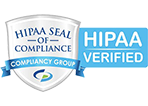What Are the Different Types of Manuals Used in Manual Therapy for Accident Pain?
The days and weeks following a car accident can be overwhelming due to insurance claims, vehicle repairs, and of course, pain if you sustained injuries. If your pain isn’t addressed promptly, it can result in chronic issues that can limit your range of motion and your quality of life.
This is why our team at Impact Medical Zephyrhills always recommends that people seek medical treatment immediately after an accident, including manual therapy.
Here are some different types of manual techniques that can be beneficial to help treat accident pain.
Why Manual is Effective After an Accident
After an accident, you may have injuries to the soft tissues of the neck or back. Manual is generally an effective method to treat such injuries as it increases circulation, which in turn promotes healing.
If you get a concussion in a car accident, manual can help strengthen the parasympathetic nervous system, which is quite helpful for those who have a concussion.
Now, let’s see how different manual techniques can treat accident pain!
Types of Manual to Treat Accident Pain
Several kinds of manual therapy can alleviate car accident pain including:
Trigger Point Manual
Like unknotting a snag in a sweater, trigger point manual is used to change the “locking up” of muscles following an accident. Trigger point manual helps release the pain and tension in the muscles, thus improving the range of motion.
Since trigger points are caused by trauma to the muscles, this is an essential technique for treating injuries like whiplash. A skilled manual therapist can find the trigger point areas, compress them, and then release the isolated pressure, allowing the area to relax as it changes the memory of the muscle.
Craniosacral Manual
This technique is particularly effective for people who have experienced whiplash. Craniosacral manual therapy is very gentle and focuses on the head and neck. It is very relaxing and can also help reduce headaches after an accident.
Myofascial Release
Myofascial tissues surround and support the muscles in your body and can develop tightness and tenderness after an accident. Myofascial release manual will gently and gradually stretch these tissues, helping to relax the tension build-up and work out the adhesions that are causing pain. This ultimately improves your range of motion by relaxing and lengthening the supporting tissues.
Deep Tissue Manual
True deep tissue manual can be crucial to your healing process if you have developed scar tissue from a car accident. Deep tissue manual uses sustained pressure and slow, deep strokes, focusing on the inner layers of muscles and tendons, alleviating tension, and breaking up scar tissue.
It can also promote faster healing as it increases blood flow and reduces inflammation.
Swedish Manual
One of the most common forms of manual is called “Swedish manual,” which focuses on relaxation. It is gentler than deep tissue manual and is used to loosen tight muscles that are causing stiffness.
Following a car accident, you may find that the relaxation that Swedish manual offers is more important than ever, as it can help calm your nervous system, improve, and promote healing, and ease discomfort and soreness.
Neuromuscular Manual
The focus of a neuromuscular manual is to improve the alignment of the muscular and skeletal systems. Neuromuscular manual therapists will place consistent pressure on a site that has low blood flow or adhesions. This kind of therapeutic manual is highly effective when working with whiplash, muscle imbalances, and nerve compression after an accident.
Relax, Repair, & Rejuvenate
If you are experiencing pain and loss of range of motion after a car accident in the Zephyrhills area, our manual therapists at Impact Medical Zephyrhills can help! From relaxing Swedish or Cranial Sacral manual to deep tissue and myofascial release, we can find the best manual technique to treat your injuries.
Don’t wait. Call our manual therapists for a consultation today at (813) 706-5156!
